When faces are immortalised in oil paint, watercolour, pencil and pastels, the artist captures a vital aspect of the sitter’s life – usually commemorating their military prowess, regal status or marital role. Childhood portraiture, by contrast, captures a sense of what is yet to come – making these charming artworks an insightful glimpse into ambitions and family life over many centuries.
 Above: a variety of child portraits from different eras
Above: a variety of child portraits from different eras
From the pallid expressions of Puritan families to the romanticised domesticity of Victorian life, this article will explore the history and themes of child portraiture. We will also provide an insight into the conservation of historic and modern paintings in our specialist studio.
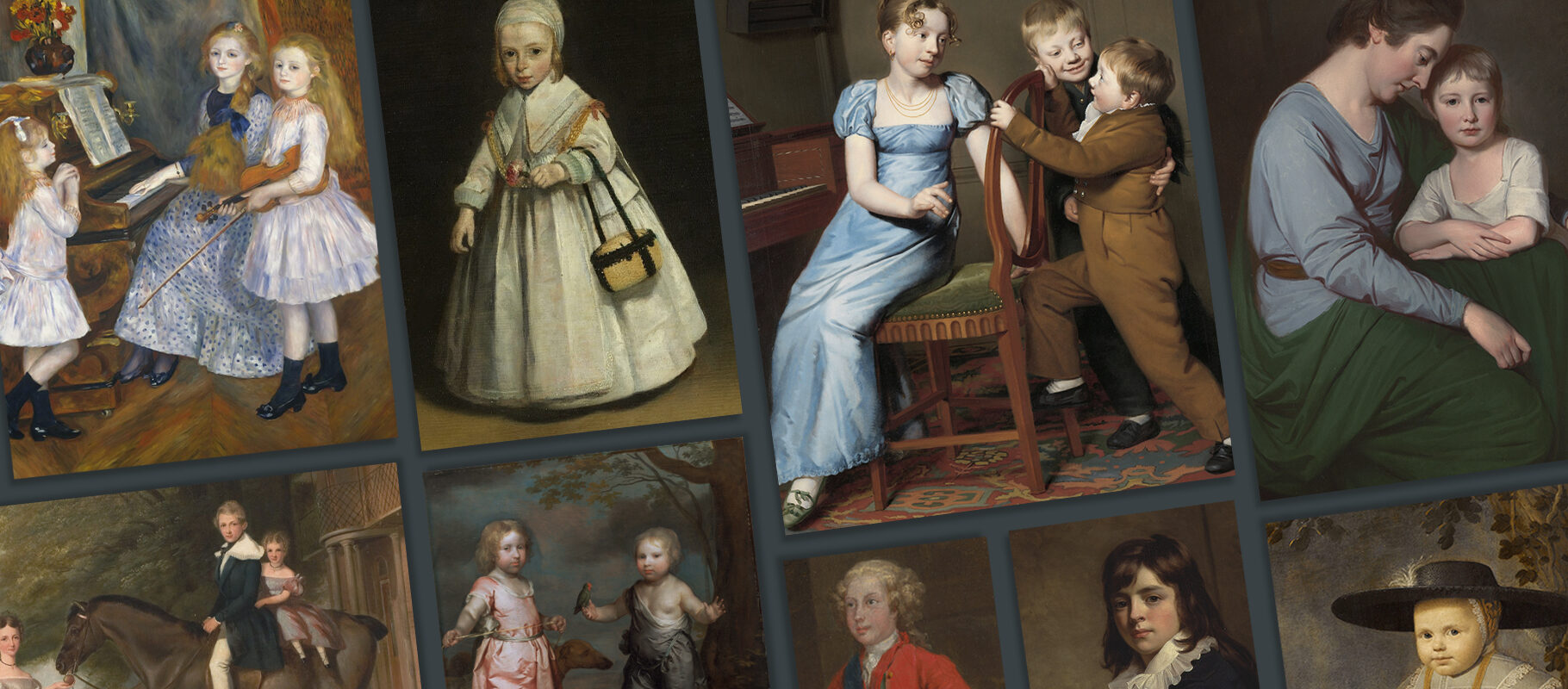 Above: a variety of child portraits from different eras
Above: a variety of child portraits from different eras
History and themes
Due to high rates of infant mortality, many historic portraits were composed in a time when every second child would die before their 15th birthday. With 50% of babies and children passing away, it was a precarious time filled with great levels of parental hope. Not only was childhood filled with uncertainty, but the very act of giving birth was a difficult and dangerous experience for mothers. All of this resulted in a healthy child being an accomplishment for a family, especially for aristocrats who had a focus on their line of succession. The achievement of producing one child or more was worth recording for reasons beyond our modern sentimentality.
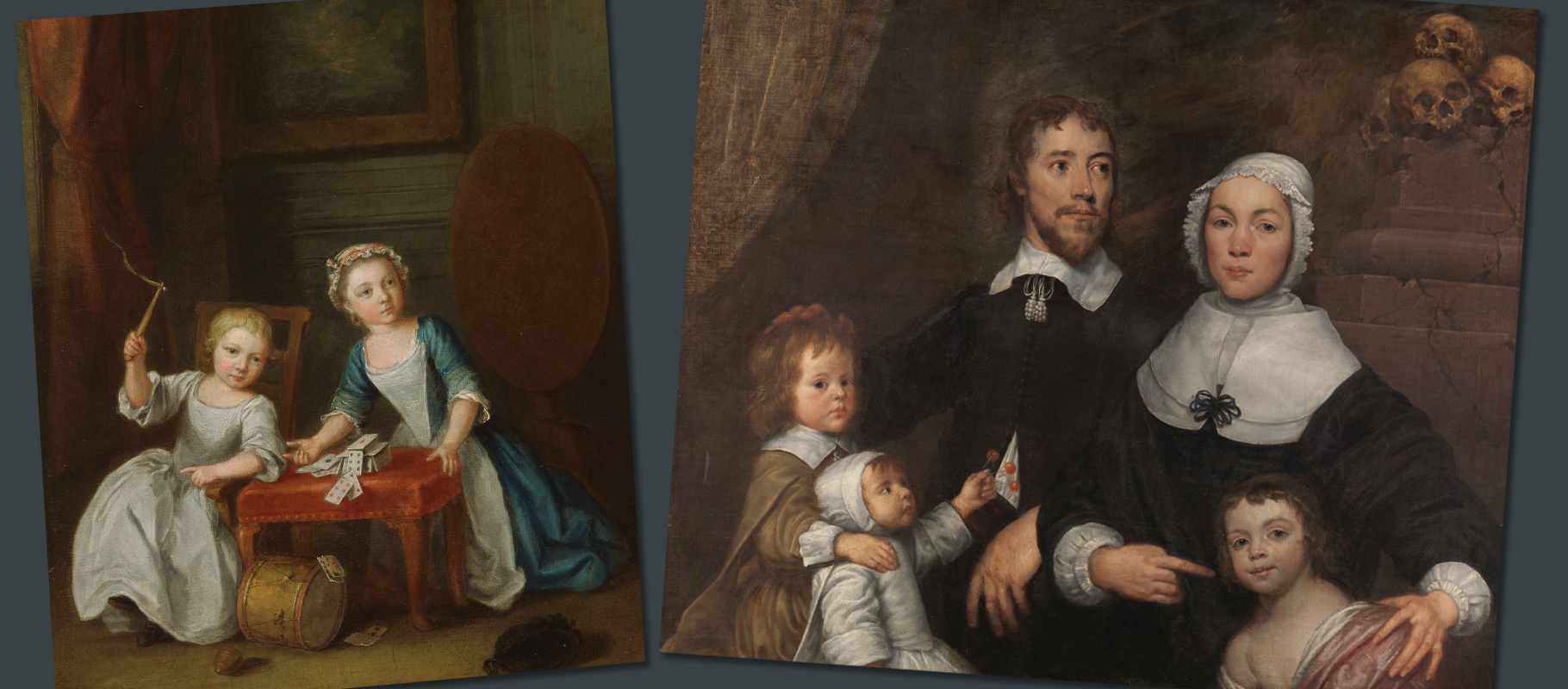 Above: two portraits with allegorical elements reflecting on the fragility of life – the falling house of cards and the inclusion of skulls
Above: two portraits with allegorical elements reflecting on the fragility of life – the falling house of cards and the inclusion of skulls
When people think of children in art history they are often reminded of the sometimes bizarre pre-renaissance depictions of the Christ Child. The ‘ugly babies’ of the past were composed to reflect an idea of Jesus being a homunculus (little man) rather than the angelic infant we expect to see today. The homunculus idea stems from the thought of Christ’s form remaining unchanged, being born perfectly in proportion to an adult man. Prior to the naturalism of renaissance, painters of mediaeval and byzantine genres worked primarily for churches and produced their work within strict standards of Christian art.
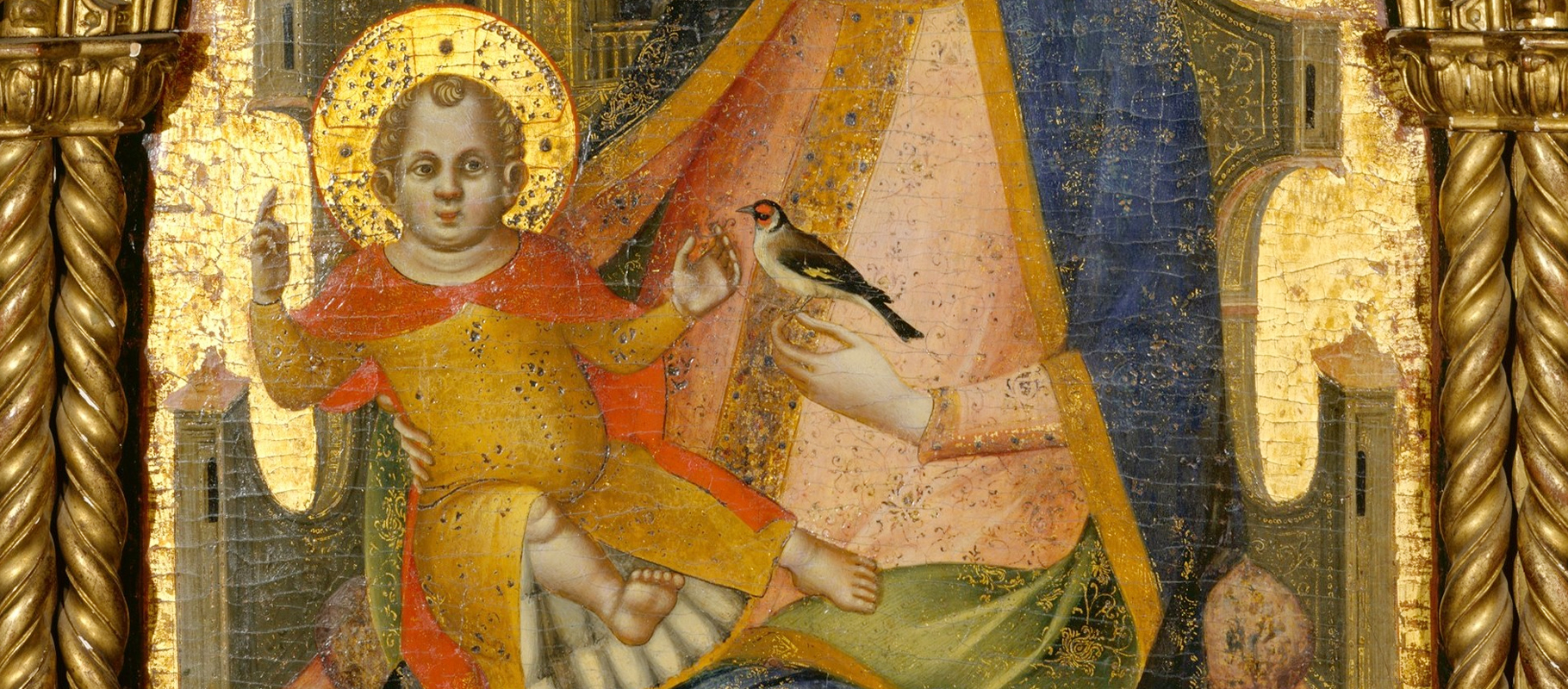 Above: detail from Madonna and Child Enthroned by Lorenzo Veneziano, 1360-65
Above: detail from Madonna and Child Enthroned by Lorenzo Veneziano, 1360-65
Not only did the 16th century see artistic developments, but a social change that allowed artists to have patronage beyond religious settings. Upper and middle classes commissioned a wide range of art, including family portraiture. Whilst the homunculus Christ Child may have made sense to mediaeval scholars, it was not an attractive or realistic way to compose the faces of precious renaissance children. However, the idea of childhood as we know it today was still a long way off. Children in this period were primarily seen as small adults, rather than being socially separate due to their age.
 Above: Francesco Sassetti and His Son Teodoro by Domenico Ghirlandaio (1488), Margaret of Austria by the Master of Moulins (1490) and Federico Gonzaga by Francesco Francia (1510)
Above: Francesco Sassetti and His Son Teodoro by Domenico Ghirlandaio (1488), Margaret of Austria by the Master of Moulins (1490) and Federico Gonzaga by Francesco Francia (1510)
By the 17th century, child portraiture was a vital social tool for families hoping to attract marriage prospects for their children. Girls were especially a subject, as they were often betrothed young and needed to provide their future husband with a record of their appearance. Margaret Theresa of Spain, best known for her depiction in Las Meninas, was painted by Velázquez multiple times throughout her childhood. These portraits were sent to the court of Holy Roman Emperor Leopold I, her future husband, who was keen to keep track of his future wife. However, the eventual marriage did not last long and she died aged 21. Today, her childhood portraits can be found in galleries around the world.
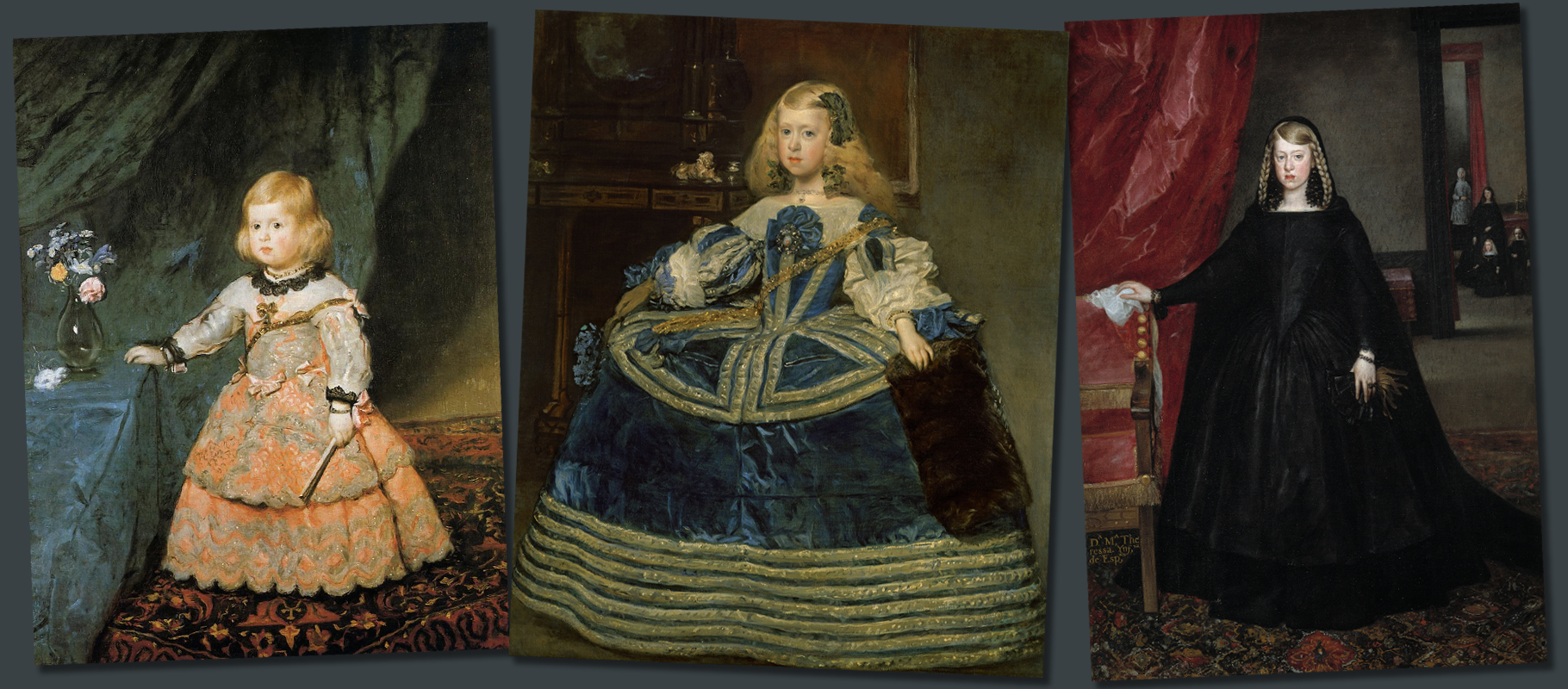 Above: three portraits of Margaret Theresa of Spain in 1653, 1659 and 1666
Above: three portraits of Margaret Theresa of Spain in 1653, 1659 and 1666
The enlightenment period saw a philosophical progress that began to change society’s view on childhood. Beyond the constraints of aristocratic life, pastoral subjects became not only fashionable but a sign of good disposition. It was also indicative of wealth to have the free time to play outside carefree, when lower class children of the same age would have already been employed in manual labour.
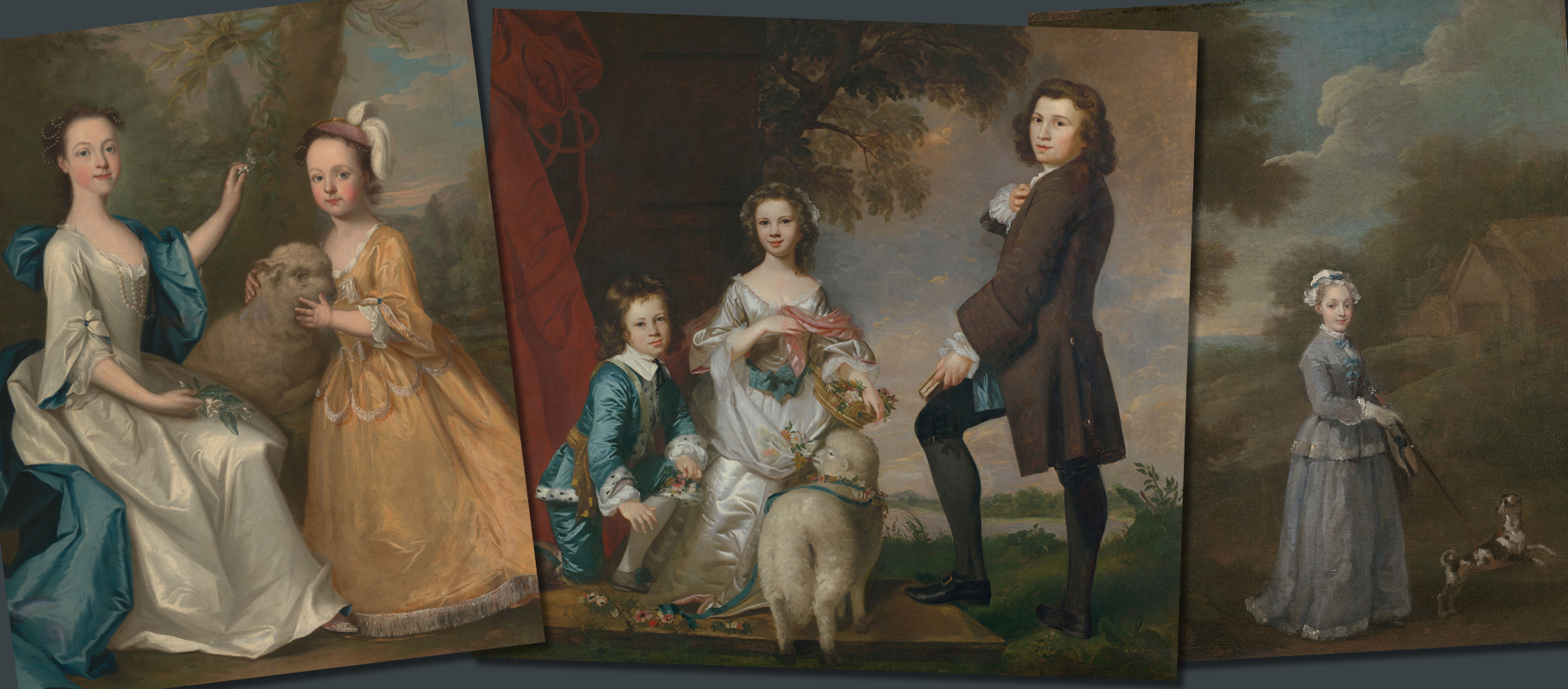 Above: Young Women with a Lamb by Thomas Hudson (1745), Thomas and Martha Neate with His Tutor by Joshua Reynolds (1748) and Miss Wood by William Hogarth (1730)
Above: Young Women with a Lamb by Thomas Hudson (1745), Thomas and Martha Neate with His Tutor by Joshua Reynolds (1748) and Miss Wood by William Hogarth (1730)
Animals were also used to provide narrative, sheep could symbolise purity, the lamb of God or the story of Saint Agnes. Similarly, hunting dogs and lap dogs could be a sign of wealth, obedience and loyalty. Allegorical inclusions made for an attractive composition and provided a well-educated way to commentate on the sitter’s prospects without provoking vanity.
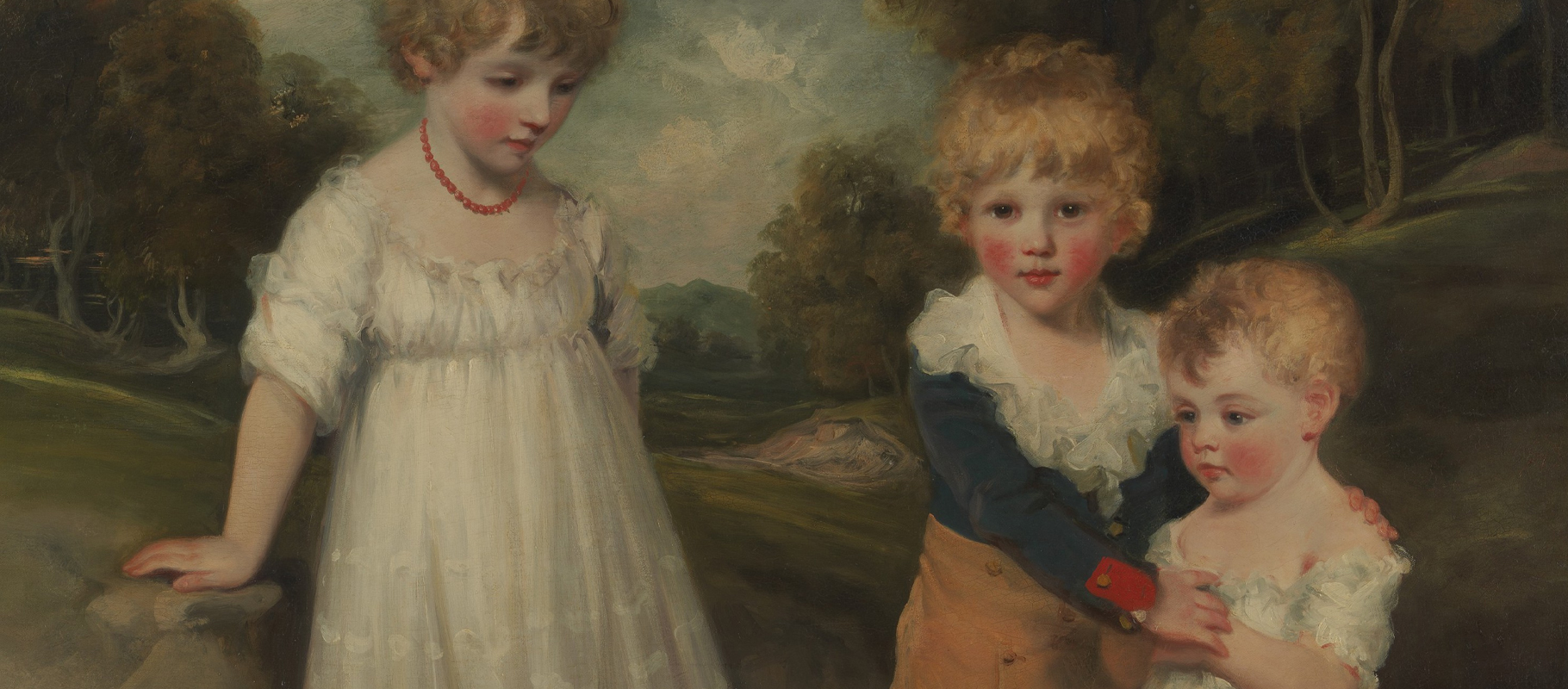 Above: a detail from The Sackville Children by John Hoppner, 1796
Above: a detail from The Sackville Children by John Hoppner, 1796
Portraitists working in England had ambitions for their work competing with the History Painters of Europe. Although their commercial success was dependent on portraits, they were able to merge in allegorical and mythological themes to achieve this deeper artistic approach. Children in the mid to late 18th century are often portrayed outdoors in romanticised ‘peasant’ attire or given the attributes of classical figures through subtle references that highlight their moral character with elegant and dramatic effect.
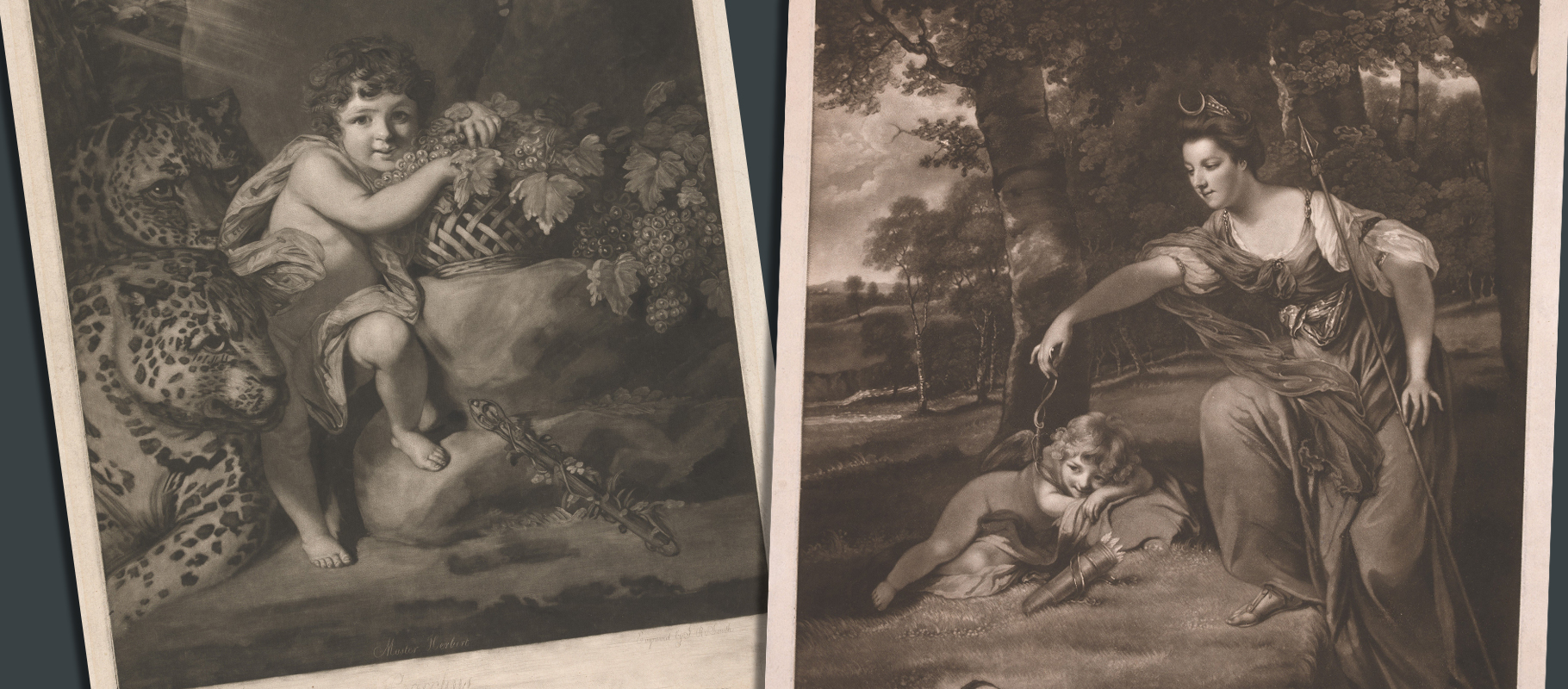 Above: prints of Master Henry George Herbert as the ‘Infant Bacchus’ and Duchess of Manchester with Her Son George, Viscount Mandeville, as ‘Diana and Cupid’ – both after paintings by Joshua Reynolds
Above: prints of Master Henry George Herbert as the ‘Infant Bacchus’ and Duchess of Manchester with Her Son George, Viscount Mandeville, as ‘Diana and Cupid’ – both after paintings by Joshua Reynolds
At the dawn of the Victorian era, child portraiture reflected a growing domesticity and idealised family life. This concept was promoted by Queen Victoria and Prince Albert, who themselves had family portraits with a naturalistic theme, as well as paintings of their many children. By this period in history, the idea of toys and games for children was mainstream in upper and middle class households and the idea of allowing children to enjoy their innocent youth was celebrated in art.
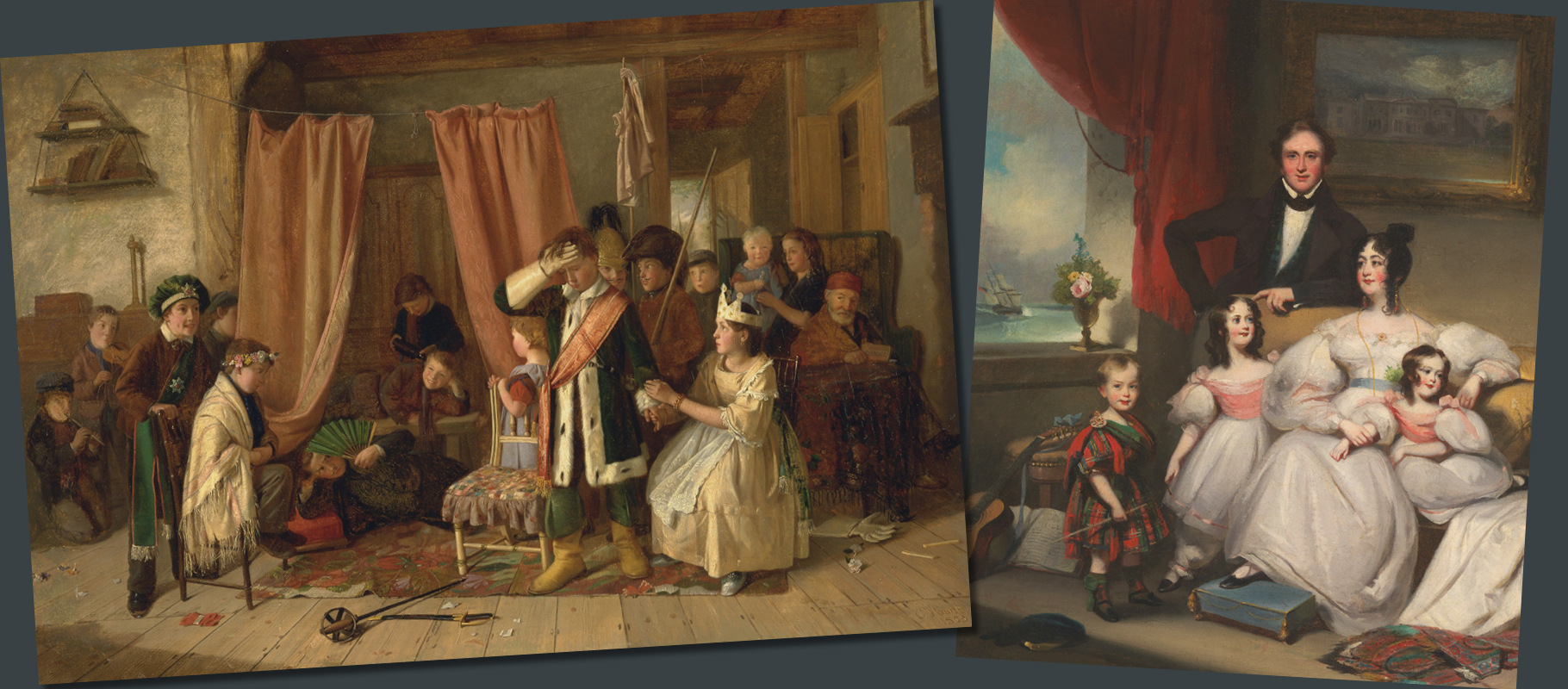 Above: Children Acting the Play Scene from Hamlet by Charles Hunt (1863) and An English Family in Macao by George Chinnery (1835)
Above: Children Acting the Play Scene from Hamlet by Charles Hunt (1863) and An English Family in Macao by George Chinnery (1835)
At the end of the 19th century, labour laws were changing along with access to education, allowing children to avoid work in factories and instead be nurtured at home for much longer. The advent of photography made family portraits readily available to those who may not have been previously wealthy enough to commission a painting. The change in demand for art patronage allowed artists to switch from commercial portraiture to composing their own pieces without input from their clients. Today, child portraiture completed in oil paint is much rarer, often family heirlooms are painted by past family members or friends, rather than traditional studios.
 Above: The Knapp Children by Samuel Lovett Waldo and William Jewett (1833-34), The Raymond Children by Robert Peckham (1838) and Marguerite-Thérèse Berard by Auguste Renoir (1879)
Above: The Knapp Children by Samuel Lovett Waldo and William Jewett (1833-34), The Raymond Children by Robert Peckham (1838) and Marguerite-Thérèse Berard by Auguste Renoir (1879)
Caring for oil portraits
Oil paintings can survive for hundreds of years in the correct conditions, especially once they have been professionally stabilised and cleaned by a trained conservator. Once any discolouration or damage has been treated, it is worth considering the correct environment for display.
 Above: detail from a portrait of Miss Susanna Gardiner by Thomas Gainsborough, stable cracks like these are called craquelure and are a normal feature of antique paintings
Above: detail from a portrait of Miss Susanna Gardiner by Thomas Gainsborough, stable cracks like these are called craquelure and are a normal feature of antique paintings
It is a museum standard to keep oil paintings at 21 degrees celsius with a relative humidity of 50%. It is important not to have constant fluctuations in environments, as the materials and structure may be disturbed by this. Do not display a painting near to a heat source (such as a radiator, vent or air conditioning) to avoid a constantly changing atmosphere.
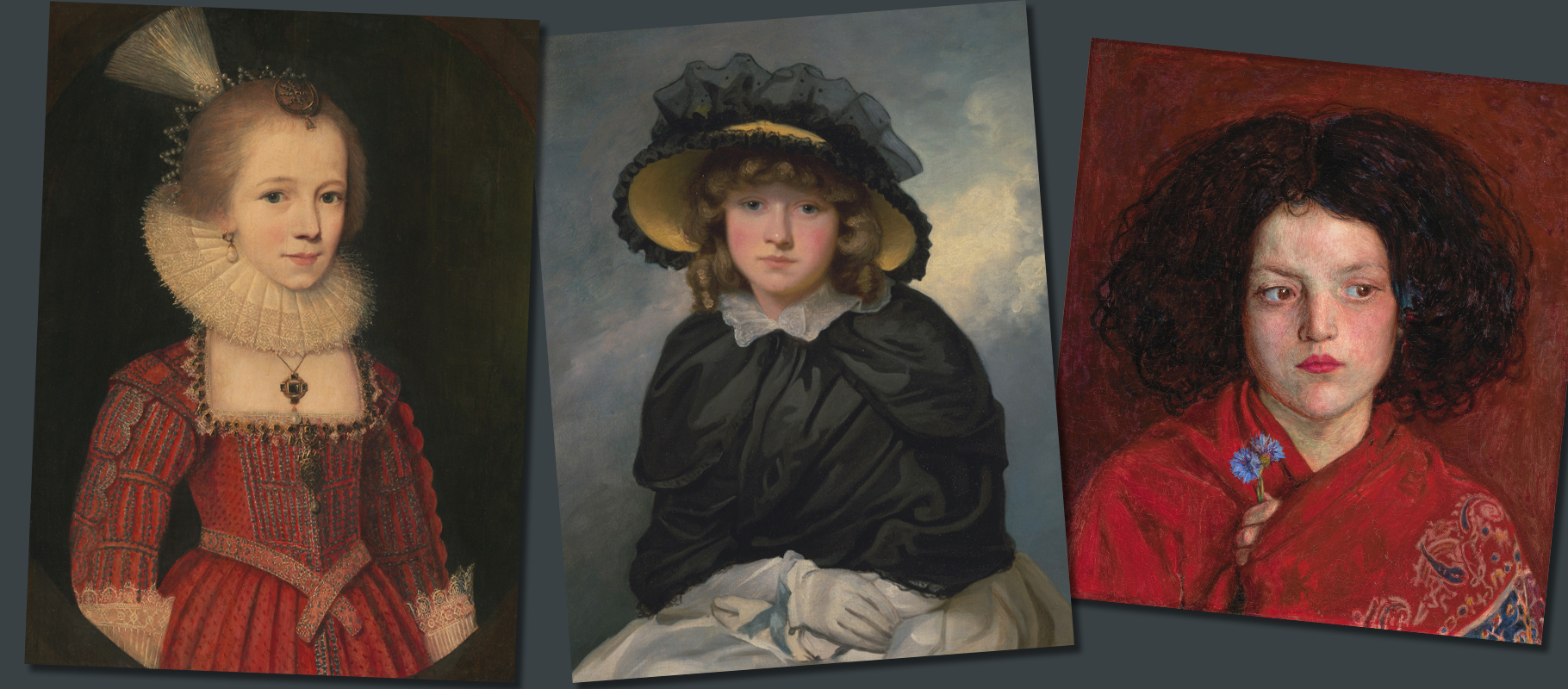 Above: three portraits from different eras – A Young Girl by Paul van Somer (1615), Louisa Lane by John Hoppner (1782) and The Irish Girl by Ford Maddox Brown (1860)
Above: three portraits from different eras – A Young Girl by Paul van Somer (1615), Louisa Lane by John Hoppner (1782) and The Irish Girl by Ford Maddox Brown (1860)
A well-fitted frame is also important, this will be one that is not too tight (this leads to warping and stress on the canvas) or too loose (this may cause the canvas to move and rub against the edges). Frames can be completely restored by our team or new era-appropriate options can be created.
Portrait restoration
Historic and modern oil paintings are restored in our studio for a wide variety of reasons. The most common is discolouration of the surface, either due to a build-up of contaminants or a yellowing varnish layer. Following a gentle surface clean, the varnish can be removed with a solvent that is tested to the sensitivity of the paint – ensuring it is not disturbed in the process.
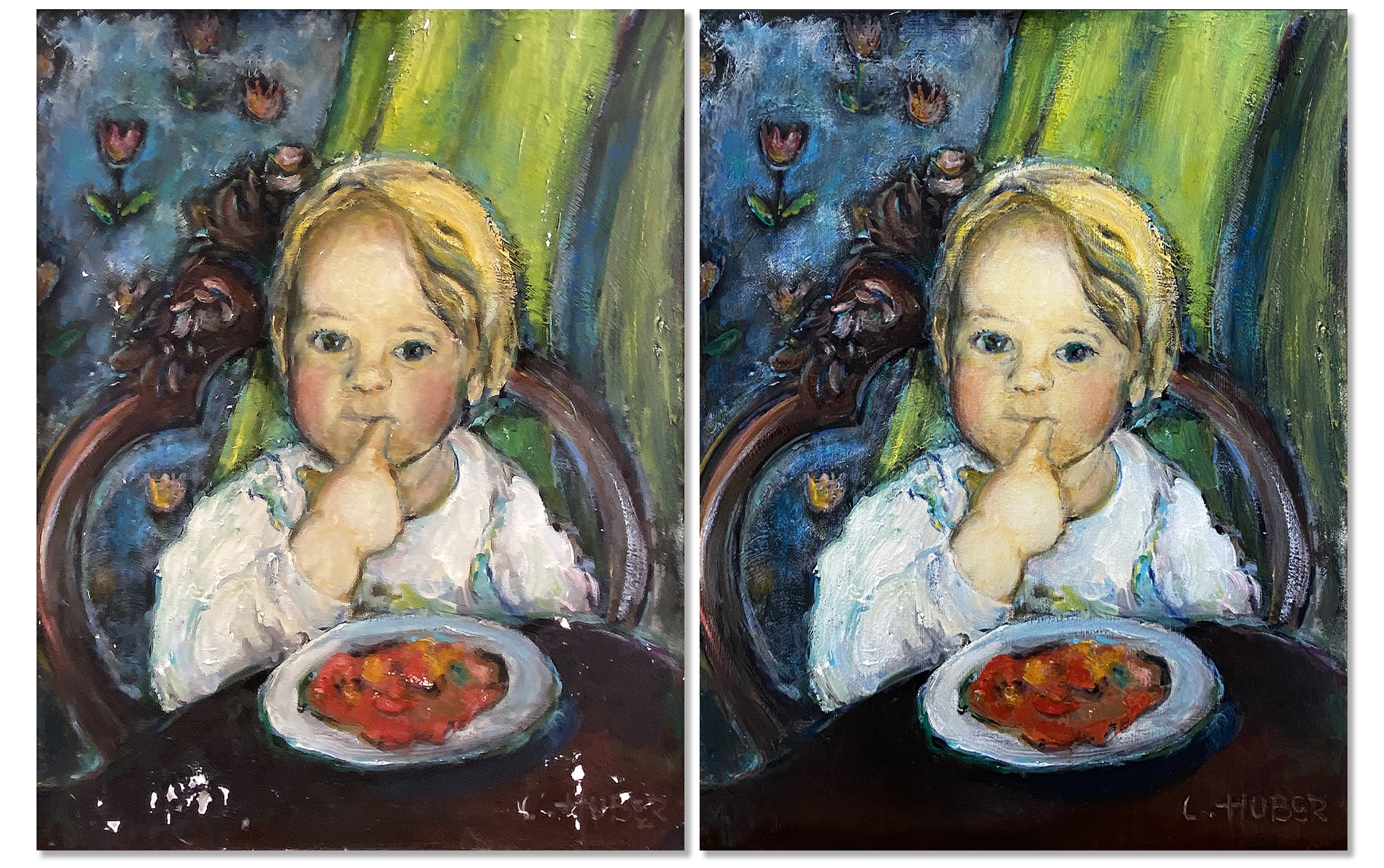
All paintings are assessed under UV light and raking light to establish their current condition. This lighting allows our conservators to see old areas of damage as well as the extent of deformations in the canvas.
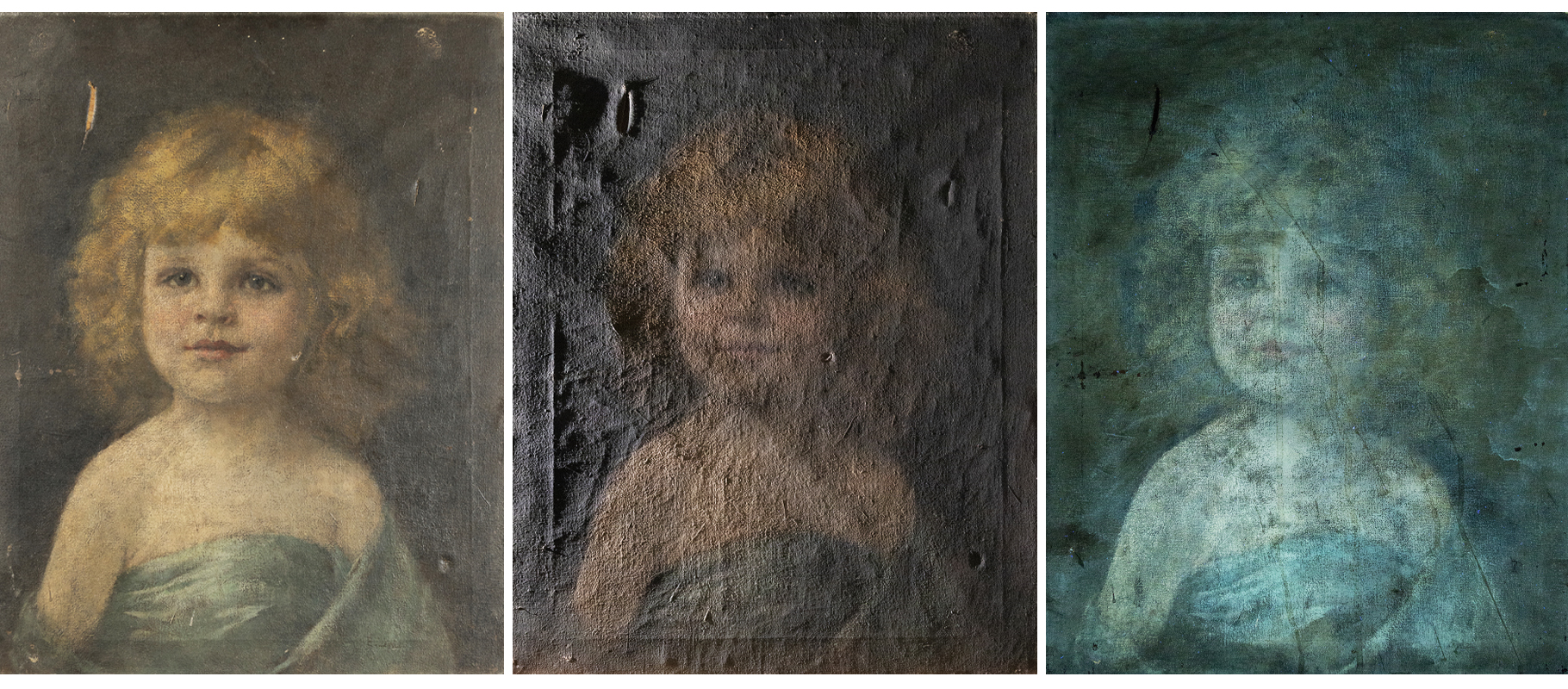
Some paintings may have areas of historic repairs or unoriginal paint; in cases where these are disturbing the original composition, they can be removed and replaced with contemporary conservation methods.
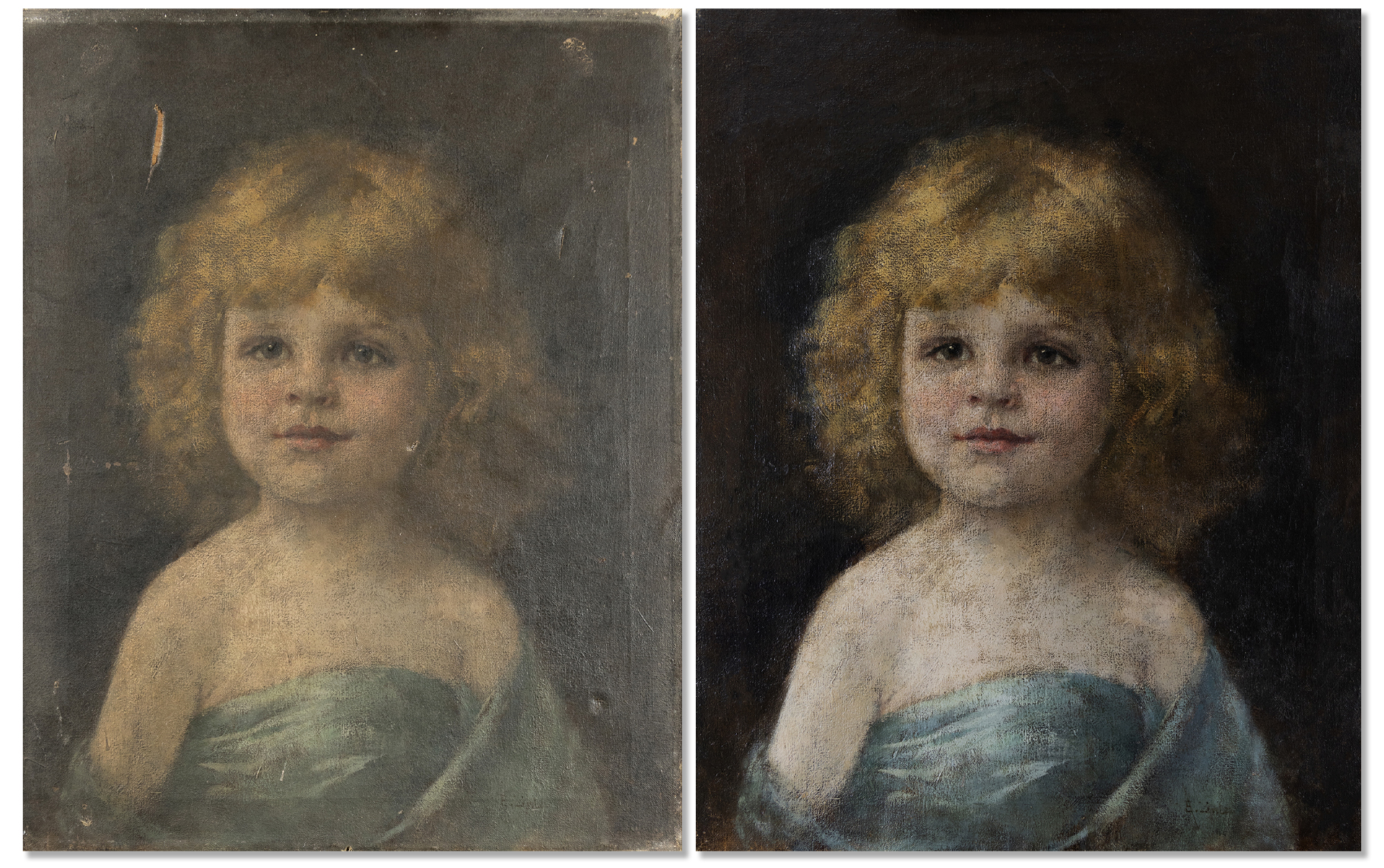
Structural damage such as tears, holes and other disturbances to the canvas, can be repaired at a microscopic level. Broken fibres are restored under microscope using a thread-by-thread technique. Flaking and heavily cracked paint can also be consolidated and sympathetically re-touched in a way that preserves the historic and artistic integrity of the artwork.
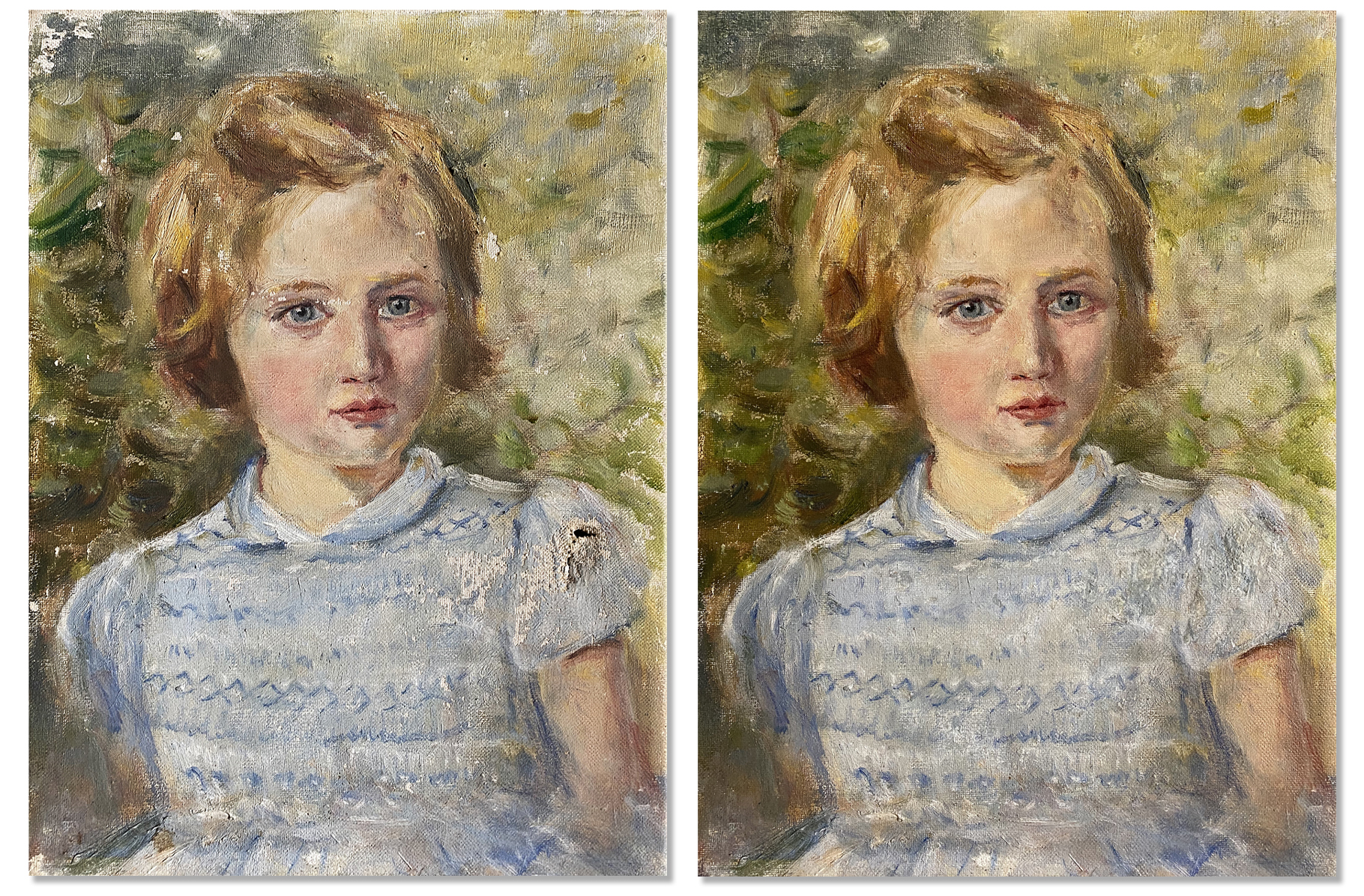
How can we help?
If you have any questions about art restoration, please do not hesitate to get in touch. As part of our service we offer a nationwide collection and delivery service. E-mail us via [email protected] or call 0207 112 7576 for more information.






